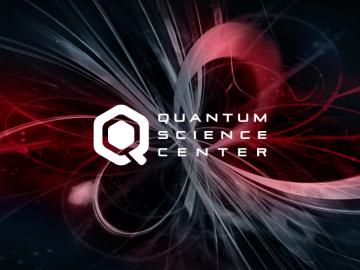
Filter News
Area of Research
- (-) Supercomputing (56)
- Advanced Manufacturing (1)
- Biology and Environment (18)
- Computational Biology (1)
- Computational Engineering (1)
- Computer Science (6)
- Energy Science (12)
- Fusion and Fission (17)
- Fusion Energy (13)
- Materials (10)
- Materials for Computing (5)
- National Security (14)
- Neutron Science (9)
- Nuclear Science and Technology (18)
- Nuclear Systems Modeling, Simulation and Validation (1)
- Quantum information Science (7)
News Type
News Topics
- (-) Advanced Reactors (1)
- (-) Big Data (20)
- (-) Coronavirus (9)
- (-) Frontier (18)
- (-) Fusion (1)
- (-) Machine Learning (9)
- (-) Quantum Science (14)
- 3-D Printing/Advanced Manufacturing (2)
- Artificial Intelligence (23)
- Bioenergy (3)
- Biology (7)
- Biomedical (11)
- Biotechnology (1)
- Buildings (2)
- Chemical Sciences (2)
- Computer Science (62)
- Critical Materials (3)
- Cybersecurity (2)
- Energy Storage (2)
- Environment (18)
- Exascale Computing (17)
- Grid (1)
- High-Performance Computing (28)
- Isotopes (1)
- Materials (5)
- Materials Science (9)
- Mathematics (2)
- Microscopy (2)
- Nanotechnology (6)
- National Security (3)
- Neutron Science (6)
- Nuclear Energy (3)
- Physics (4)
- Polymers (2)
- Quantum Computing (15)
- Security (2)
- Simulation (13)
- Software (1)
- Space Exploration (2)
- Summit (28)
- Transportation (4)
Media Contacts

To explore the inner workings of severe acute respiratory syndrome coronavirus 2, or SARS-CoV-2, researchers from ORNL developed a novel technique.

A team of scientists led by the Department of Energy’s Oak Ridge National Laboratory and the Georgia Institute of Technology is using supercomputing and revolutionary deep learning tools to predict the structures and roles of thousands of proteins with unknown functions.

A team led by the U.S. Department of Energy’s Oak Ridge National Laboratory demonstrated the viability of a “quantum entanglement witness” capable of proving the presence of entanglement between magnetic particles, or spins, in a quantum material.

An ORNL-led team comprising researchers from multiple DOE national laboratories is using artificial intelligence and computational screening techniques – in combination with experimental validation – to identify and design five promising drug therapy approaches to target the SARS-CoV-2 virus.

To better understand the spread of SARS-CoV-2, the virus that causes COVID-19, Oak Ridge National Laboratory researchers have harnessed the power of supercomputers to accurately model the spike protein that binds the novel coronavirus to a human cell receptor.

A multi-institutional team, led by a group of investigators at Oak Ridge National Laboratory, has been studying various SARS-CoV-2 protein targets, including the virus’s main protease. The feat has earned the team a finalist nomination for the Association of Computing Machinery, or ACM, Gordon Bell Special Prize for High Performance Computing-Based COVID-19 Research.

There are more than 17 million veterans in the United States, and approximately half rely on the Department of Veterans Affairs for their healthcare.

The Department of Energy has selected Oak Ridge National Laboratory to lead a collaboration charged with developing quantum technologies that will usher in a new era of innovation.

From materials science and earth system modeling to quantum information science and cybersecurity, experts in many fields run simulations and conduct experiments to collect the abundance of data necessary for scientific progress.

COVID-19 has upended nearly every aspect of our daily lives and forced us all to rethink how we can continue our work in a more physically isolated world.


